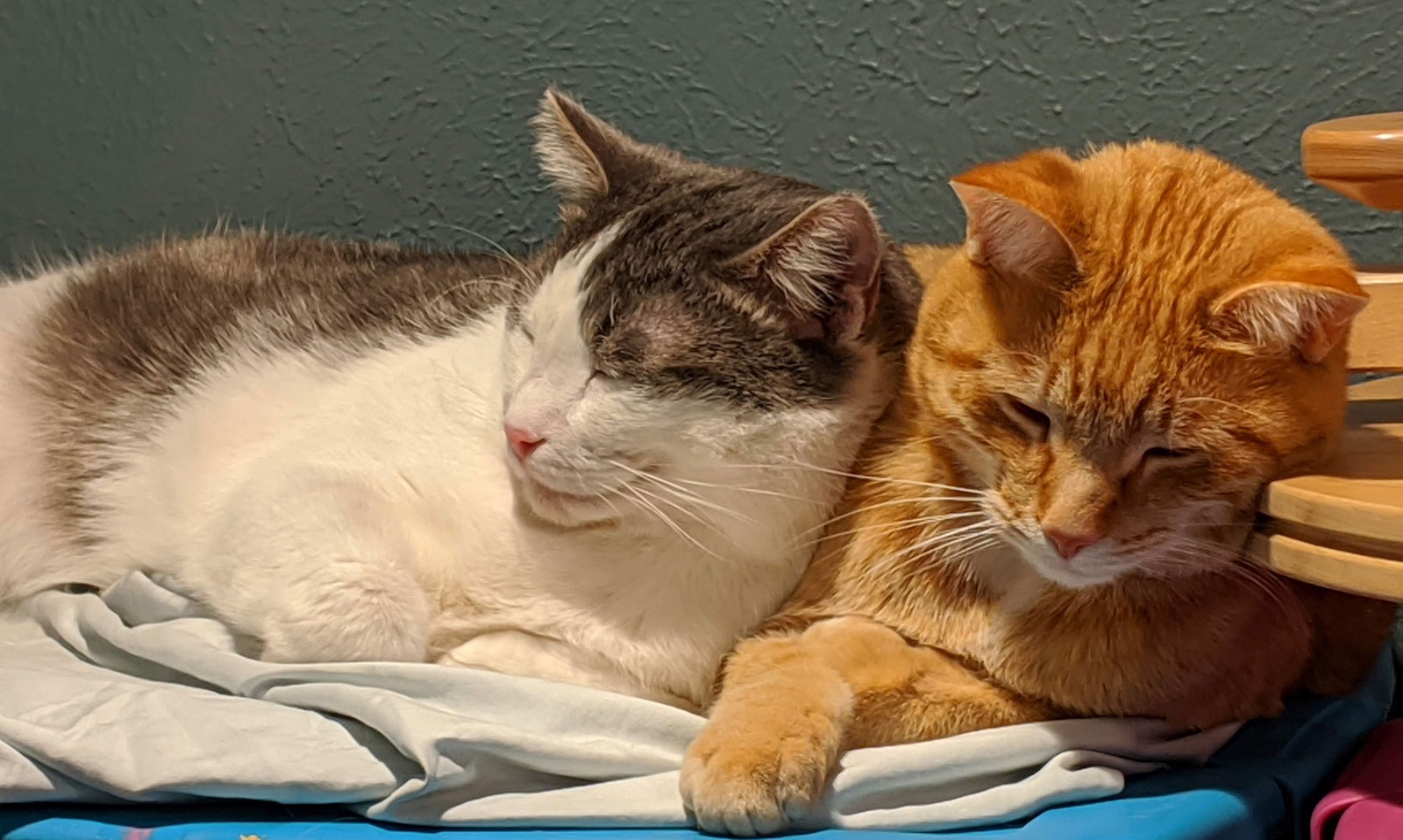My yarn and fiber stash is pretty average by crafter standards. I have more than a few bins of fleece, combed top, yarn, and fabric, but I can generally wrangle it into a corner of my office. There is one kind of fiber, though, that escapes my efforts at tidying up: Cat fur. When it comes to sticking to your clothes, Angelina and Firestar have nothing on Domestic Shorthair.
Wool, Hair, or Fur?
In The Intentional Spinner, Judith MacKenzie explains that wool has a solid central core, while hair is medullated, or hollow at the core. The terms fur and hair are largely interchangeable, though the term "fur" is typically reserved for animals, and fiber that doesn't grow to a specific length and generally needs to be cut is referred to as hair. Whether it's on a sheep or goat or cat or me, all this fiber is made up of the protein keratin.
Can I spin pet fur?
This question is often asked by spinners, pet-lovers, and the generally curious. The most common replies are:
- Yes!
- The fiber I get isn't suitable.
- Ew.
The last answer isn't really logical; we spin fiber from another domestic pet, the rabbit. Ancient spinners made yarn from wolf and wooly dog. It can seem uncanny, though, in the same way that the once-popular art of hair jewelry seems distasteful in modern society. The novelty factor has kept the book Knitting with Dog Hair: Better A Sweater From A Dog You Know and Love Than From A Sheep You'll Never Meet in print for almost 25 years, though the publisher told me he suspected that very few of the copies were sold to people who used it as an instruction manual.
My Domestic Shorthair cats have two coats, like cashmere goats and yaks and primitive-breed sheep: a straight, slick year-round coat that resists bending and can be prickly, and a soft, crimpy undercoat that sheds in the spring. Both are quite short, and the coats can be hard to separate. Pet owners who have longer-haired cats or dogs with thick undercoats might have more luck.
So about the hairballs
Hairball Awareness Day is actually about pet health, not just fiber and shedding. And although we might think (somewhat queasily) about hairballs as a grooming byproduct, we should also be extra careful to protect our pets from our craft fiber. Occasionally I sit down to my knitting and discover that the end of my yarn has been chewed through--unpleasant for me, but worrisome if my cat ate any of the yarn.
So when my fiber and yarn threaten to take over the house, I try to remember that for the sake of my cherished fiber producers, it's best to keep the stash locked away and the cats brushed.

